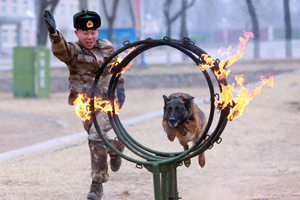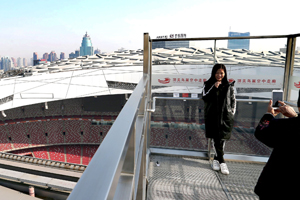Efforts focus on smog 'routes'
Governments in cities along three pollution "highways" have been told to coordinate their efforts to cut emissions and help prevent the kind of smog that again blanketed the Beijing-Tianjin-Hebei region on Sunday and is expected to persist for five days.
The Ministry of Environmental Protection has identified 20 cities that are required to beef up pollution controls and work to unify emergency response standards.
The cities lie on three routes — western, central and eastern — on which airborne pollutants travel north due to geological and meteorological conditions, according to Xue Wenbo, director of airborne simulation for the Chinese Academy of Environmental Planning.
There are eight such cities in Hebei province, five in Shandong province and five in Henan province, as well as Beijing and Tianjin.
Researchers have said that tackling emissions in cities along the routes will cut the severity of air pollution in neighboring areas and ultimately help Beijing meet its ambitious target this year. The goal is to reduce the daily concentration of PM2.5 — fine particulate matter that is particularly hazardous — to 60 micrograms per cubic meter, down from 73 in 2016.
The ministry has installed more monitoring stations to facilitate scientific, targeted solutions to the problem posed by the smog highways in the Beijing-Tianjin-Hebei region.
Pollutants discharged from chimneys taller than 45 meters along the routes can reach the capital within hours, according to Chen Jining, the minister of environmental protection.
To address that problem, in 2016, the ministry sent inspection teams to 1,239 factories with 45-meter-high chimneys in the 20 cities to oversee measures to cut the rate of excessive pollutants. As a result, the rate fell from 31 percent to 3.79 percent over the 12 months, Chen said.
In addition, the ministry also limited or halted industrial production and processing of iron and steel and ordered cities to coordinate their smog responses.
"We've found that some cities do not make a timely emergency response or do less than is required, to avoid affecting industrial production," said Liu Bingjiang, head of air quality management for the ministry.
Cities should engage in joint controls instead of waiting for others to act, he said, adding that government officials' performance will be assessed by the ministry.
The smog across the Beijing-Tianjin-Hebei region is expected to reach a peak on Tuesday and Wednesday in terms of severity and coverage, according to the China National Environmental Monitoring Center.
Twenty-three cities are forecast to experience severe air pollution on Wednesday, including Beijing, Tianjin, Shijiazhuang and Baoding in Hebei province, Jinan and Dezhou in Shandong province, and Zhengzhou in Henan province.


















